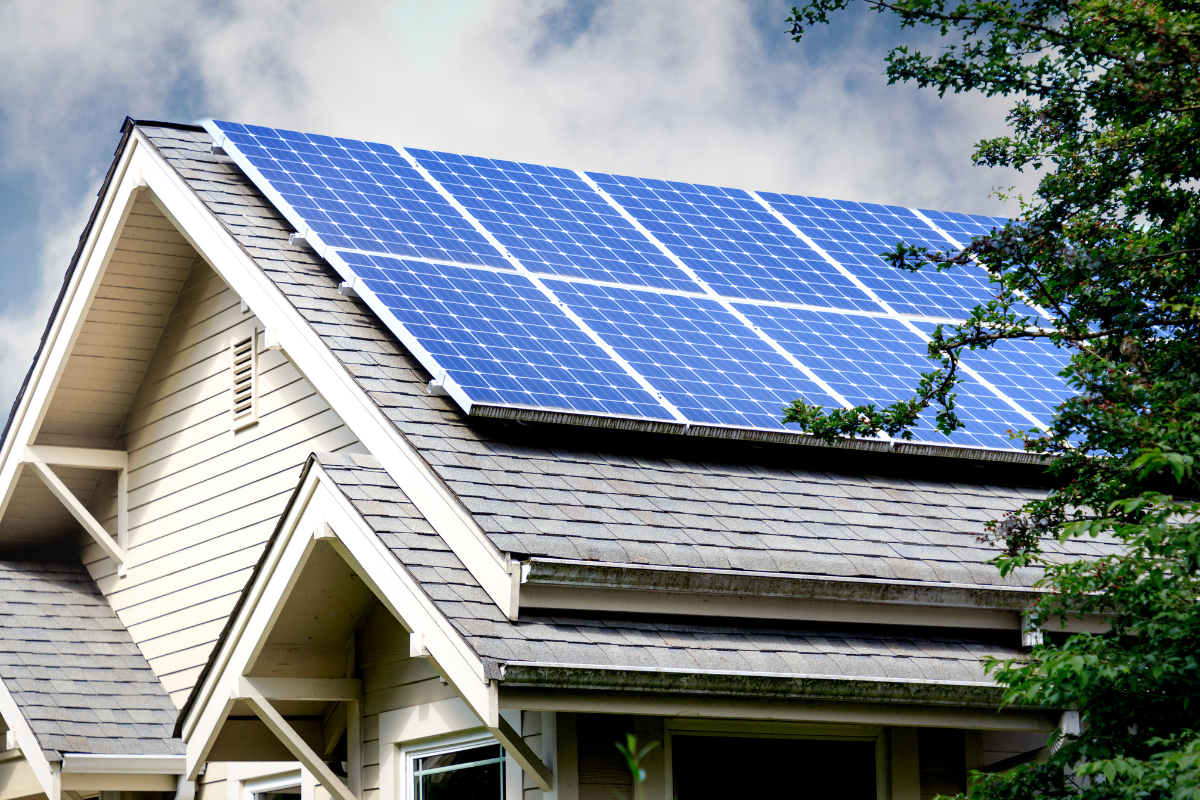How Do We Measure Electricity
When people talk about electricity, the words can sound too technical. But behind every light, fridge, or home battery system, there are simple numbers that help us understand how much power is used or stored. These numbers matter, especially for people who want clean and steady energy for their homes. Let’s get started with power units.
Understand Units of Power
Power shows how fast electricity flows. It is measured in watts. Every energy system—from small devices to large grids—uses this same concept. Power is not about how much energy you have. It tells how quickly you can use or deliver that energy.
In the energy industry, power units are one of the most basic and important tools. They are used every day in system design, pricing, safety, and reporting. Engineers, utility companies, and battery makers all rely on clear power numbers when they build and test energy systems.
What Are the 5 Units of Power in Energy Systems?
Not all energy systems use the same unit. Small systems use small units. Big systems use large ones. Each power unit tells how fast energy can be delivered or used. Knowing the size of each unit helps you understand what type of system you're looking at—whether it's for a phone charger or a national power grid.
Watt (W)
The watt is the smallest and most basic unit of power. It tells how fast energy flows in one second. If a device uses 10 watts, it means it uses 10 units of energy every second.
Where it appears: Small electronics like LED lights, phone chargers, fans
Why it matters: These small numbers are helpful for understanding energy use at the device level
Example: A standard LED light bulb may use only 10 watts. A phone charger often uses 5 watts.
Watt-level ratings are useful for comparing small devices, but not enough for home systems.
Kilowatt (kW)
One kilowatt equals 1,000 watts. This is the most common unit used in homes and small buildings. When people talk about solar panels or home batteries, they usually speak in kilowatts.
Where it appears: Home appliances, solar panel systems, backup battery systems, EV chargers, smart electrical panels, and other home energy components
Why it matters: It tells whether your system can handle your peak power needs
Example: A refrigerator may use about 1 kW when the compressor is running. An electric stove may use 2–3 kW while cooking.
Home battery systems are often rated around 3 to 10 kW. This number tells you how much power can be delivered at one time—not how long it lasts.
Megawatt (MW)
One megawatt is 1,000 kilowatts, or 1,000,000 watts. This is a common unit in factories, hospitals, or large solar and wind farms.
- Where it appears: Commercial buildings, energy storage plants, solar farms
- Why it matters: It helps businesses and power companies size equipment and plan loads
- Example: A mid-size data center might need a 2 MW power system to run servers and cooling.
Megawatts are often used in utility projects and large-scale battery installations.
Gigawatt (GW)
One gigawatt equals 1,000 megawatts, or 1 billion watts. It is used to measure energy output at the national or regional level.
- Where it appears: Power plants, country-level energy reports, utility-scale storage
- Why it matters: It shows how much electricity a plant or system can deliver to entire cities or states
- Example: A nuclear power plant may produce 1.2 GW of electricity. That can power hundreds of thousands of homes.
Energy companies often use gigawatts when planning national energy supply or building high-capacity infrastructure.
Terawatt (TW)
One terawatt equals 1,000 gigawatts, or 1 trillion watts. This unit is used in global reports or energy predictions for the future.
- Where it appears: Worldwide energy research, climate studies, long-term forecasts
- Why it matters: It gives a big picture view of how much power the world needs or can produce
- Example: As of today, global power capacity is over 8 TW. Some projections show we may need more than 20 TW in the coming decades.
You will not see terawatts in any home or business setup. But this unit is important in understanding the total power needs of Earth.
Knowing the right unit helps you read product labels, energy plans, or battery specs with more confidence.


How to Convert Between Units
All power units follow a simple rule: every bigger unit is 1,000 times the smaller one. You can move between them by multiplying or dividing. This is helpful when reading battery specs, solar panel ratings, or energy reports.
Unit | Equals in Watts |
1 Kilowatt | 1,000 Watts |
1 Megawatt | 1,000,000 Watts |
1 Gigawatt | 1,000,000,000 Watts |
1 Terawatt | 1,000,000,000,000 Watts |
To go from watts to kilowatts, divide by 1,000.
To go from kilowatts to megawatts, divide by 1,000 again.
To go the other way, just multiply.
Easy Examples
1,000 Watts = 1 Kilowatt
1,000 Kilowatts = 1 Megawatt
1,000 Megawatts = 1 Gigawatt
0.5 Gigawatt = 500 Megawatts
10 Megawatts = 10,000 Kilowatts
2 Kilowatts = 2,000 Watts
When reading system specs, always check the unit. A number may look small or large depending on which unit it uses. For home battery users, kilowatts and megawatts are the most common.


Why Power Units Matter in the Energy Industry: 5 Reasons
They are used in every grid and solar plan
Engineers use power units like kilowatts and megawatts to design all parts of energy systems. For example, when building a solar farm, they must know how much power the system can produce at any time. The same idea is used when planning battery networks, wind turbines, or backup power stations. Without these units, no one could plan or size the system correctly.
They help balance supply and demand
Electricity must be balanced every second. Power use goes up and down all day, so utilities must adjust the supply to match it. If homes and factories need more power during the evening, the grid must send more at once. This is measured in kilowatts or megawatts. If the balance is wrong, lights may flicker or blackouts can happen.
They are part of all energy contracts
When a business or building buys electricity, the deal includes how much power will be available. A small office might need 100 kilowatts. A factory may need 2 megawatts or more. These numbers are used in the contract to set prices and service levels. Without clear power units, the agreement would be confusing and risky.
They set safety limits
All wires, batteries, and machines have a maximum power they can handle. If too much power flows through, the system can overheat or fail. Engineers use power units to test and design systems that are safe. They use this data to choose cable sizes, cooling systems, and other safety parts. Power limits help stop fires and damage.
They guide smart grid technology
Modern power systems respond in real time. Smart software uses power units to know exactly how much energy is moving through the grid. If one part of the grid sends too much or too little, the system reacts. Fast and accurate power data helps the grid stay balanced and strong, even during big changes or storms.
These units are not just for big companies. They also help homeowners choose the right battery. If your system has too little power, it may not support your home during peak hours. If it has too much, you may spend more than needed. So, understanding power units is the first step in building an energy system that works for the industry, and for your home.
What Is a Good Kilowatt for Whole House Battery Backup?
The kilowatt (kW) shows how much power your battery can send at one time. This is the first thing to check when choosing a whole-house system. If your battery cannot deliver enough kilowatts, it will not support big appliances like ovens, A/C units, or well pumps—even if it has a large battery capacity. A system with 3–5 kW can handle lights, routers, and a fridge. For full home use, 7–10 kW is safer. Large homes or off-grid cabins may need 15–20 kW or more.
The EcoFlow OCEAN Pro system offers strong power for these needs. Its inverter delivers 24 kW of continuous power and up to 50 kW of peak output, enough for nearly all home loads. Whether you're running multiple appliances or starting a central A/C unit, this system has the strength.
Energy storage (measured in kWh) is also important; it shows how long the power can last. Even if your system has enough kilowatts, it still needs enough stored energy to keep your home running through the night or during a long outage.
The EcoFlow OCEAN Pro offers flexible and expandable storage. Each unit holds 10 kWh, and the system can scale up to 80 kWh with eight stackable batteries. This gives you the time coverage you need—not just minutes of backup, but many hours or even days. It’s designed for families who want both strong power and long-lasting energy for real home use.
Understanding Power for Better Choices
Electricity is measured in simple units like watts and kilowatts. Bigger systems use megawatts or more. These units tell us how fast power is used or stored. For home battery owners, knowing the right kilowatt range helps match your power needs to your system. Clear numbers lead to better energy plans.
FAQs About Power Units & Home Batteries Answered
Q1. Can I run high-surge appliances like a water pump or central A/C with a battery system?
A: Yes, but you must check the battery inverter’s peak power rating, not just its continuous output. Some appliances need a short burst of high power (called surge or LRA). For example, a central air conditioner may need 40–50 kW to start, even if it only runs at 5–7 kW. Choose a system with enough peak output to handle this. The EcoFlow OCEAN Pro Inverter supports up to 50 kW surge, which is suitable for most large household loads.
Q2. How do I know if my current panel can support a high-power battery system?
A: You need to check your main service panel rating—usually 100A, 200A, or 400A in U.S. homes. A high-capacity inverter like EcoFlow OCEAN Pro (24kW continuous) may require a dedicated subpanel or smart load panel to manage power flow safely. Always consult a licensed electrician to assess your home’s wiring and panel compatibility.
Q3. Is it possible to charge a home battery from both solar and grid at the same time?
A: Yes. Many hybrid systems, including EcoFlow OCEAN Pro, support multi-source charging. You can charge from solar during the day and switch to the grid at night. This allows for faster charging or flexible scheduling during time-of-use pricing. Some inverters also allow generator input as a third source.
Q4. What is the difference between apparent power (kVA) and real power (kW) in home energy use?
A: Apparent power (measured in kVA) includes both usable power (kW) and reactive power (kVAR). Real power (kW) is the actual power your appliances use. Some heavy motors and HVAC systems cause a power factor less than 1. A high-quality inverter system should correct for this and maintain a power factor close to 1.0, which means more of the stored energy goes directly into your home’s loads.
Q5. How do energy management systems (EMS) help optimize kilowatt usage in smart homes?
A: An EMS tracks real-time power usage and controls when certain loads turn on or off. It can shift large loads to off-peak hours, reduce grid demand, and prevent overloads. In systems like EcoFlow OCEAN Pro, EMS tools work with AI to reduce electricity bills, protect the system from surges, and extend battery life. These tools are useful for households that want to automate energy savings without manual input.